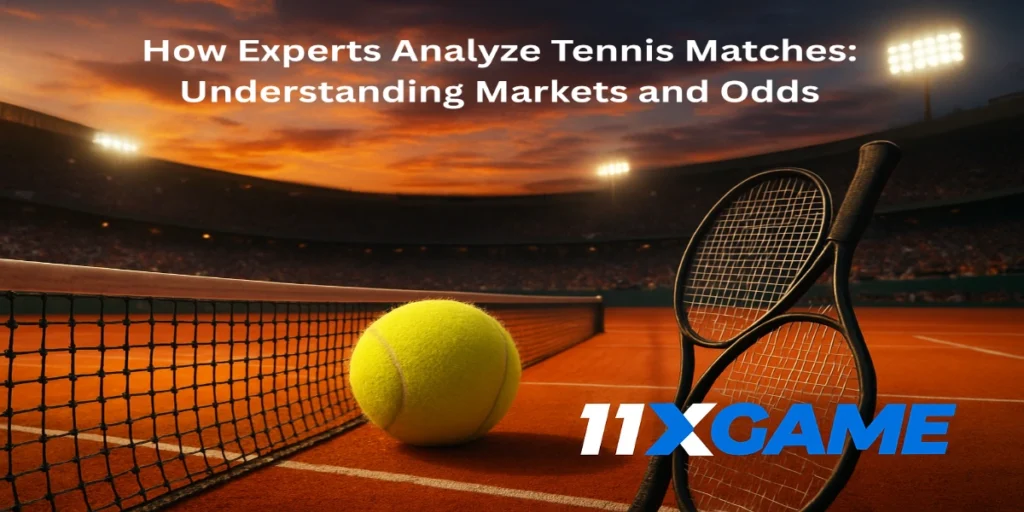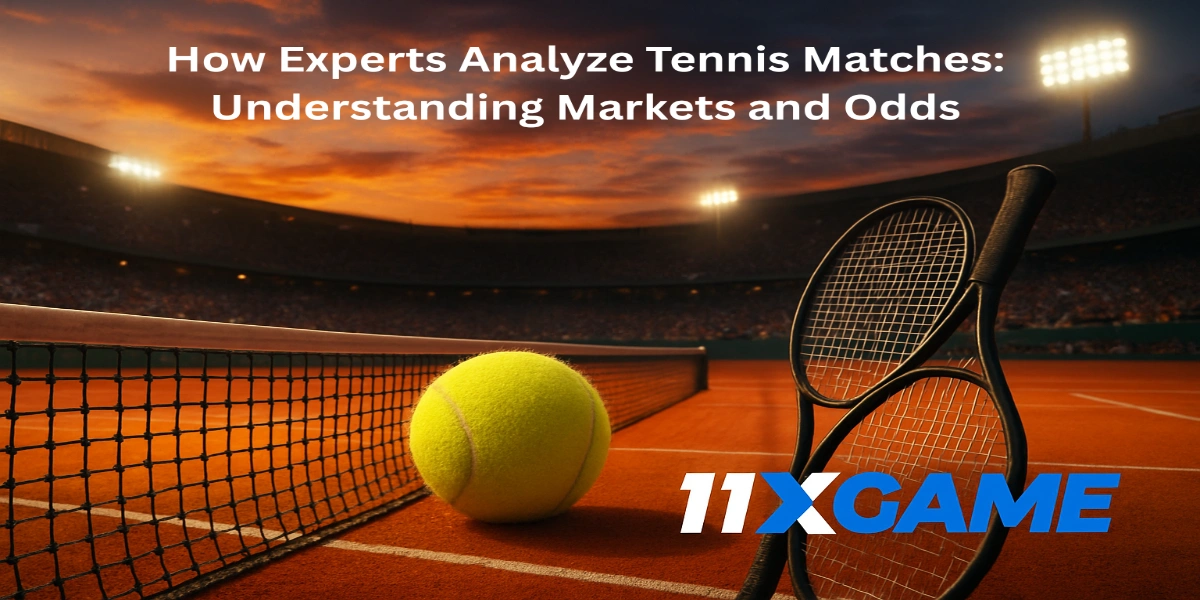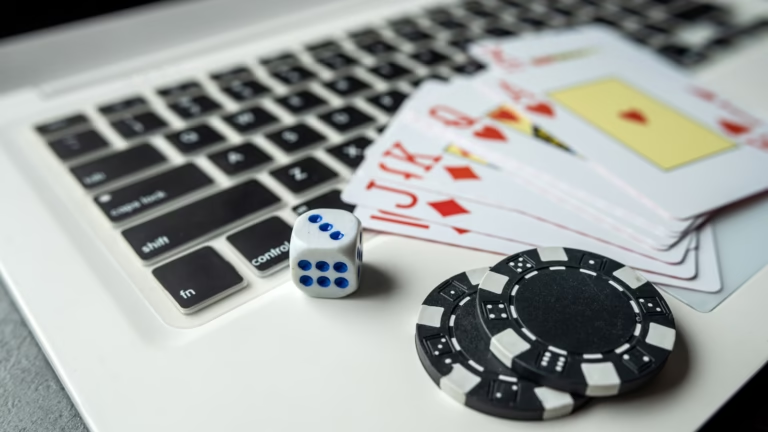How Experts Analyze Tennis Matches: Understanding Markets and Odds
Tennis is a sport rich in data, patterns, and player tendencies. Experts in tennis analysis rely on careful observation, statistics, and strategic reasoning to assess matches. While casual observers may focus on rankings or reputations, experts dive deeper to understand how matches are likely to unfold.
This guide explains how tennis experts approach match analysis and markets, including the methods and thought processes they use to interpret odds, trends, and outcomes.

1. Understanding Tennis Markets Through Analysis
Even without placing bets, experts use market odds as a reflection of probability. They examine the lines to understand how bookmakers assess a matchup and compare it to their own evaluation.
- Match winner assessment: Experts look at factors like recent performance, head-to-head history, and surface preference to assess which player has a higher likelihood of winning.
- Set and game predictions: By analyzing past match lengths, player serve stats, and break-point efficiency, experts can estimate how many sets or games a match might last.
This approach is less about betting and more about forecasting match outcomes using quantitative and qualitative insights.
2. Key Metrics Experts Use
Experts rely heavily on data-driven analysis to form their assessments. Some key metrics include:
a. Player Form
- Recent results, match wins/losses, and performance trends indicate consistency.
- Experts note whether a player is improving, plateauing, or declining over recent weeks.
b. Head-to-Head Records
- Historical outcomes between two players reveal psychological and tactical patterns.
- For instance, some players consistently struggle against a particular style of play, even if they are higher-ranked.
c. Surface Performance
- Players perform differently on grass, clay, and hard courts.
- Experts evaluate win percentages and play style effectiveness on each surface to anticipate match flow.
d. Serve and Return Efficiency
- Key stats like first-serve percentage, aces, double faults, and return games won provide insight into match control.
- Experts use these numbers to predict the likelihood of breaks and holds of serve.
e. Tournament Context and Fatigue
- Back-to-back matches, long rallies, or travel can affect performance.
- Experts factor in recovery time and match intensity when evaluating a player’s probability of success.
3. Observing Patterns and Match Dynamics
Beyond raw statistics, experts focus on qualitative aspects of the game:
- Momentum shifts: How a player responds after losing a set or key points.
- Tactical adjustments: Changes in strategy mid-match, such as approaching the net more often or altering shot selection.
- Physical and mental resilience: Stamina, injury history, and ability to handle pressure are crucial for long matches, especially in Grand Slams.
By combining data with observation, experts create a nuanced picture of likely match outcomes and possible turning points.
4. Interpreting Odds as Information
Experts often use odds as a tool for understanding perceived probabilities, not as a betting suggestion.
- Odds summarize bookmaker expectations and public sentiment.
- Comparing odds with independent analysis can highlight discrepancies in perception versus reality.
- Experts use these insights to evaluate match difficulty and player chances without making wagers.
5. How Experts Approach Live Match Analysis
During live matches, experts continue to observe:
- Point-by-point performance: Patterns like dominance on serve or vulnerability in break points.
- Adaptability: Ability of players to adjust tactics against different styles.
- Environmental factors: Conditions like wind, temperature, and court speed that can affect match flow.
These live observations help experts refine predictions for how the remainder of the match may unfold.
6. Common Analytical Mistakes Experts Avoid
Even experienced tennis analysts are careful to avoid several common pitfalls that can skew their evaluations. Understanding these mistakes helps beginners see the importance of a disciplined and data-driven approach.
- Overemphasizing rankings without context:
While rankings provide a general idea of player ability, experts know that rankings alone don’t tell the full story. For instance, a lower-ranked player may have a favorable matchup against a higher-ranked opponent due to playing style, past head-to-head results, or recent improvements. Experts always combine ranking data with other performance indicators before forming conclusions. - Ignoring surface or match conditions:
Different court surfaces—grass, clay, or hard courts—greatly influence player performance. Experts take this into account by analyzing player win percentages and historical success on each surface. They also consider indoor vs. outdoor conditions, which affect ball speed and bounce, as well as factors like wind or humidity that can influence match flow. Ignoring these conditions can lead to inaccurate predictions. - Neglecting recent fatigue or injury reports:
Tennis is physically demanding, and players often compete in back-to-back tournaments. Experts evaluate fatigue levels by looking at recent match history, travel schedules, and recovery periods. They also track any injuries or lingering physical issues that could impact a player’s performance, even if not publicly announced. Overlooking these elements can distort match expectations. - Focusing on short-term form while overlooking long-term patterns:
A player’s recent winning streak might be impressive, but experts balance this with longer-term trends and consistency. For example, a player might perform exceptionally in smaller tournaments but struggle in high-stakes Grand Slam events. Experts weigh both short-term form and historical performance to create a more balanced and accurate evaluation.
By being methodical, disciplined, and thorough, experts ensure their analyses remain objective, reducing bias and enhancing the reliability of their assessments. They cross-reference multiple sources of data, track relevant statistics, and incorporate qualitative observations like player psychology and adaptability., experts ensure their assessments are objective and evidence-based.
7. Summary: How Experts Evaluate Tennis Matches
Experts use a combination of:
- Statistical analysis (form, head-to-head, surface performance)
- Tactical and qualitative observation (momentum, adaptability, stamina)
- Market signals (odds as probability indicators)
This process allows them to anticipate likely outcomes, identify trends, and create informed forecasts about match flow, set distribution, and player performance.
(This article is for informational purposes only. Gambling involves risk. Please bet responsibly. Always check local laws before playing & follow the law.)
Final Thought
Understanding how tennis experts analyze matches provides valuable insights not only into betting markets but into the sport itself. By examining comprehensive data, observing tactical and behavioral patterns, and interpreting odds or probabilities objectively, experts are able to evaluate potential outcomes with a high degree of reasoning and accuracy.
This methodical approach emphasizes evidence over intuition, showing that careful analysis is far more reliable than relying solely on gut feelings or superficial indicators like rankings or recent headlines. For instance, a player may be favored based on ranking, but factors such as fatigue, surface preference, or head-to-head history may suggest a different likely outcome.
Furthermore, experts often combine quantitative data with qualitative insights—like mental resilience, in-match adaptability, and response to pressure points—to form a holistic understanding of tennis matches. This approach allows for richer, more informed assessments and helps identify trends or anomalies that casual observers might miss.
In essence, studying how experts analyze tennis matches demonstrates the importance of critical thinking, structured evaluation, and disciplined observation. It provides a roadmap for anyone seeking to understand competitive tennis on a deeper level, revealing that success in analysis comes from combining data, experience, and methodical reasoning rather than relying on luck or surface-level impressions.
FAQ: Understanding How Tennis Experts Analyze Matches
Q1: How do tennis experts predict match outcomes?
A1: Experts combine quantitative and qualitative analysis. They look at player statistics, recent form, head-to-head records, and surface performance. They also consider qualitative factors such as momentum, adaptability, and physical or mental resilience. This comprehensive approach helps them anticipate likely match dynamics.
Q2: Why are head-to-head records important in tennis analysis?
A2: Head-to-head results reveal patterns that rankings alone don’t show. Some players consistently struggle against certain styles or opponents, regardless of ranking. Experts use this historical data to assess how players might perform against specific competitors.
Q3: How do court surfaces affect player performance?
A3: Each surface—grass, clay, and hard courts—affects ball speed, bounce, and playing style. Some players excel on clay but struggle on grass, while others may favor fast hard courts. Experts evaluate surface performance to understand likely strengths and weaknesses in a match.
For more educational resources and responsible gaming tips, visit 11xGame to stay informed and safe while enjoying your favorite sports.





